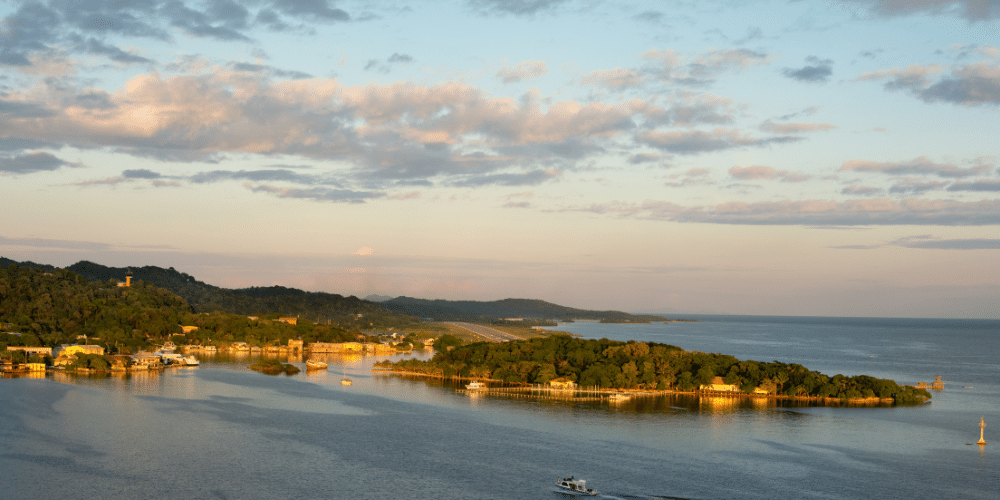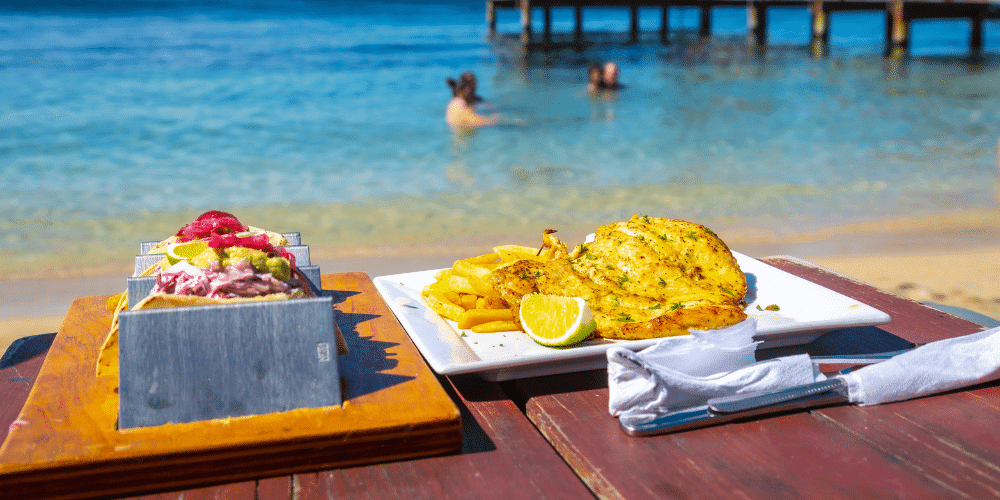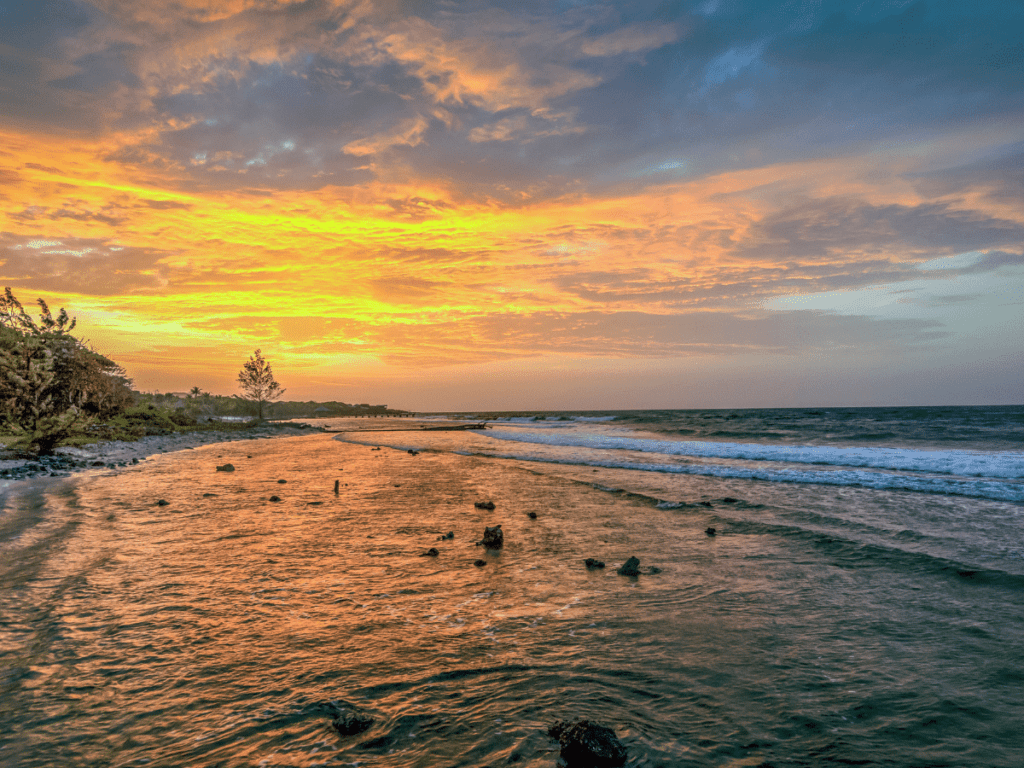Roatan used to be a hidden gem known only by the most informed travelers. However, with the opening of the Town Center cruise port in 2008, and the subsequent opening of the Mahogany Bay cruise port in 2010, the island has become exposed to many more travelers. As a result, there is more awareness, and more direct flights from North America and Europe have been added, allowing easier access to the island’s white-sand beaches and crystal clear turquoise waters. To learn more about this flourishing tropical getaway – or perhaps your future new home, here’s a list of facts you might want to know about Roatan, Honduras.
Climate
Roatan is highly valued by many travelers for its tropical climate. It has a year-round average high of 86 degrees Fahrenheit (30 degrees Celsius). The island has wet and dry seasons with the wet season running from October to January. However, the rain typically falls in sporadic but predictable showers and has very little effect on the peak travel season which generally occurs between late November and May. Roatan is situated outside of the hurricane belt, which means it is rarely affected by the annual hurricane season. The island receives cooling trade winds that come across the Atlantic Ocean from the western edges of Africa.
Geography

Roatan is a small island off the north coast of Honduras in Central America. The island is approximately 35 miles (56 km) long and about 5 miles (8 km) wide at its largest point. The island’s highest elevation is 1011 feet (308 meters). Roatan is situated on the southwestern edge of the Mesoamerican Barrier Reef – the world’s second-largest barrier reef system. Most of the island’s residents live on the western side with a much sparser population in the east. The largest town is Coxen Hole with an estimated population of about 15,000.
Currency
>The island’s main currency is the Honduran Lempira, which is symbolized by the letter “L.” It was named after a Lencan warrior who fought against colonizers in the 16th century. Cash is the preferred method of financial transaction, while the use of credit cards is generally limited to large hotels or businesses. Many smaller businesses on the island now accept PayPal. US dollars in smaller denominations are also widely accepted on the island, although they must be in pristine condition. There are ATMs in populated areas; however, popular ones are known to occasionally run out of cash, and there have been issues with card skimming. It is recommended that if you need to use an ATM, do so at a bank location.
Language
Spanish is the official language in Honduras, but most people in Roatan also speak English. However, the English spoken in Roatan is mixed with Spanish, French, and the indigenous Garifuna language, which might make it difficult to understand when spoken quickly.
Culture
Defining Roatan culture is not a simple task. There have been many influences on this tiny island over the past several hundred years. While indigenous culture developed in relative isolation for thousands of years, the arrival of the Spanish, other Europeans, and their slaves in the 15th to 19th centuries dramatically changed the shape of the island’s way of life. To provide a simplified overview of Roatan culture, we’ve put together this list.
People
It’s not easy to characterize the typical Islander as there are many different ethnic groups represented in Roatan. It’s generally accepted that the first inhabitants were the Pech or Paya who likely came from mainland Honduras around 600 AD. The arrival of the Europeans, namely the Spanish, English, Dutch and French, in the 15th and 16th centuries quickly resulted in the decimation of the original inhabitants through disease and warfare.
After European discovery, Roatan became a frequent stop for pirates, traders, homesteaders, and various European naval detachments. In the 1700s, the English gained control of the island and used it as a deportation site for the Garifuna tribe, whom they had battled in the Second Carib War. The Garifuna people, descendants of African slaves, established the first permanent settlement on the island since the decimation of the original indigenous population. To this day, the descendants of the original Garifuna settlers live in the town of Punta Gorda on the island’s north coast.
Roatan is now home to a mixture of Afro-Caribbeans, Spanish-speaking mainland Central Americans, Garifuna, and expats from all over the world, making the island culturally diverse and unique. While Spanish is the official language of Honduras, English is the dominant language on Roatan, with Patois/Creole-based English mixed with Spanish, French, and Garifuna being commonly used in day-to-day conversation. The Garifuna language evolved from the Island Carib language and is spoken in several Central American and Caribbean countries.
Food

The island’s food is influenced by many different cultures. Some of the traditional local foods that are characteristic of Roatan and Honduras include baleadas, which are tortilla-based snacks filled with refried beans, white cheese, mantequilla (a local sour cream), and optional scrambled eggs and/or meat such as chicken or pork. Desayuno típico, or “typical breakfast,” is a dish that typically features fried eggs, refried beans, tortillas, white cheese, mantequilla, avocados or guacamole, and fried plantains. Sopa de Caracol is a Garifuna-influenced conch soup that’s a specialty in Roatan and neighboring islands. It’s made by cooking conch meat in coconut milk with vegetables and local spices.

